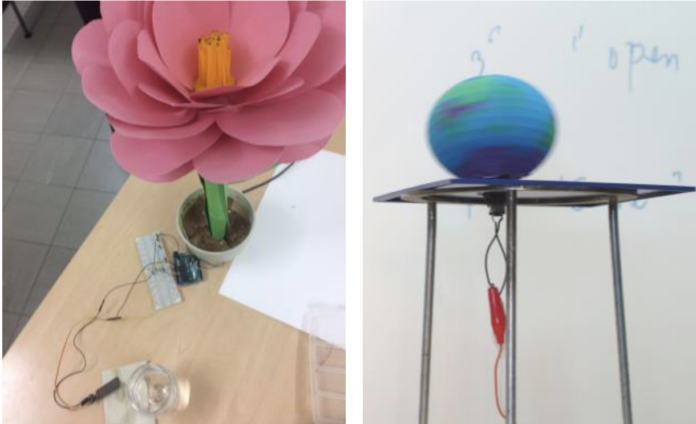One of the priorities of 21st-century skills development involves boosting creativity in education. That is because creativity is considered essential to the rapidly evolving digital society employment landscape alongside entrepreneurship, critical thinking, collaboration skills, and computational fluency. In this paper, we present our pilot tests using digital fabrication and
making within a hands-on pedagogical frame and the result in creative outcomes for STEAM learning. Within the proposed approach, students engage in tasks using a craft- and project-based pedagogy to develop lessons from their school curriculum. This paper illustrates how creativity is fostered by this approach during pilot trial experiences at a local junior high school.
This work deployed a craft- and project-based pedagogical approach [9] for STEAM learning with digital fabrication and making in a local Finnish junior high school. Two classes: classes 1, 7 th grade students, 11 pupils (4 girls/7 boys), and class 2, 8 th grade students, 18 pupils (14 girls/4 boys), participated voluntarily in the pilots. Four teachers were involved and received suitable training on digital fabrication and making tools (e.g., 3D modeling/printing, Arduino boards programming, and use of electronic components such as LEDs, sensors, etc.). The classes were given the task to represent and model through technology the concept of photosynthesis, as part of their biology subject matter. The pedagogical objectives of the
task was therefore interdisciplinary, fostering students’ understanding of biological processes as well as their digital literacy.
Notes
Pedagogical work for steam – Hands-on activities based on digital fabrication and making in formal in formal learning settings, to explore how creativity and problem-solving
skills in students are supported
The creativity here was measured through students’ self-perception of their ability to be creative and find solutions for the problems that showed up during the activities.
The students were asked to fill out a questionary or interview questions related to how they felt during the activities.
“During the project, I was able to be creative, and ‘I feel more comfortable than before
to tackle problems that I face’ (1=not at all, 2= a bit, 3= yes).”
“I was definitely creative during the project! It feels liberating when you get something done that you’ve planned. And you can look at the result and think that ‘wow, I made that.’”
The transdisciplinary approach sounds interesting. With the tech tools they got to learn new skills while they were putting into practice their theoretical knowledge got previously in a traditional class. It sounds like an interesting way to learn.
“creativity in this formal learning environment is expressed in the ability of the students to transform their gained knowledge into new solutions to tackle the task that they were
given.”
Being comfortable working is directly related to feeling creative according to this study.
I’d like to know the outcomes from a gender perspective too. How the girls felt compared to boys?
Reference
Montero, C. S. (2019). Fostering creativity self-perception in formal learning through digital fabrication and making. Proceedings of the 19th Koli Calling International Conference on Computing Education Research. https://doi.org/10.1145/3364510.3366153




